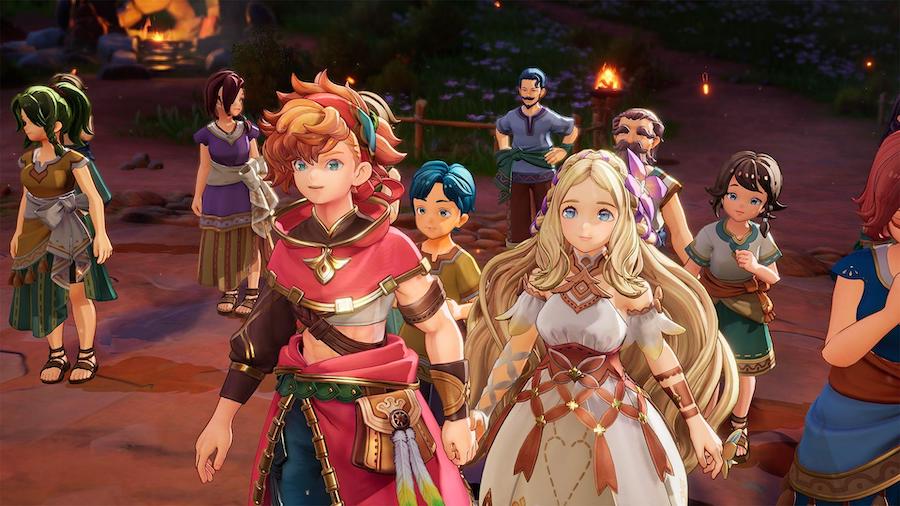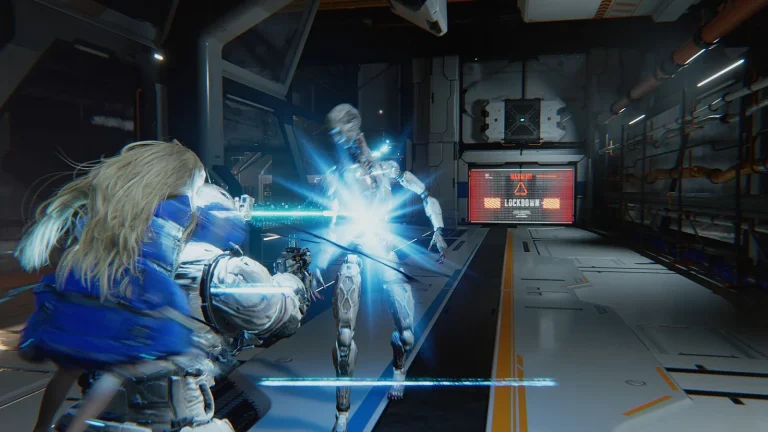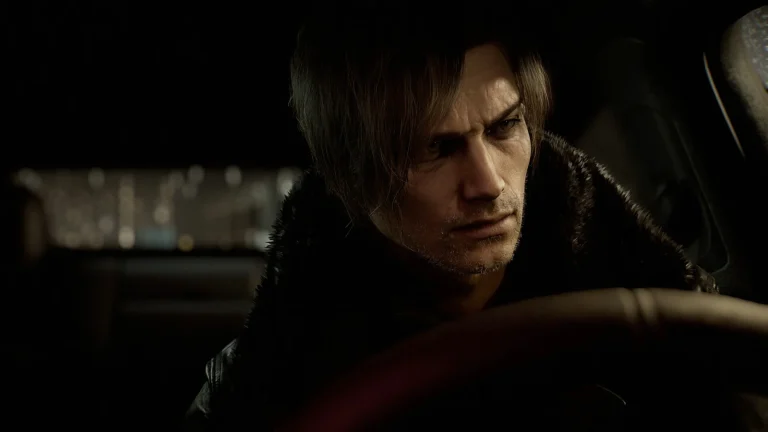Known as Seiken Densetsu in Japan, the Mana series is a long-running fantasy action RPG series originally created by Koichi Ishii. The first game, Seiken Densetsu, came out in 1991. Conceived as a spin-off from the FINAL FANTASY series, it was released as FINAL FANTASY ADVENTURE in North America in 1991. The game and its sequels won over many players with their beautiful graphics, epic and heart-warming stories, and action-based battle systems complimented by breath-taking soundtracks. Despite building up a dedicated fanbase, few titles have been developed in the legendary series since 2007.
This is why the 2020 release of the highly polished remake of 1995’s Trials of Mana, and the December 2023 announcement of Visions of Mana (the series’ first new console game in over 15 years), were welcomed with surprise by fans. Ahead of Visions of Mana’s summer 2024 release schedule, we sat down with series producer Masaru Oyamada. Read on to discover more information about the new game, why the series has been revived and Oyamada’s earnest quest to stay true to the Mana series’ distinctive style.
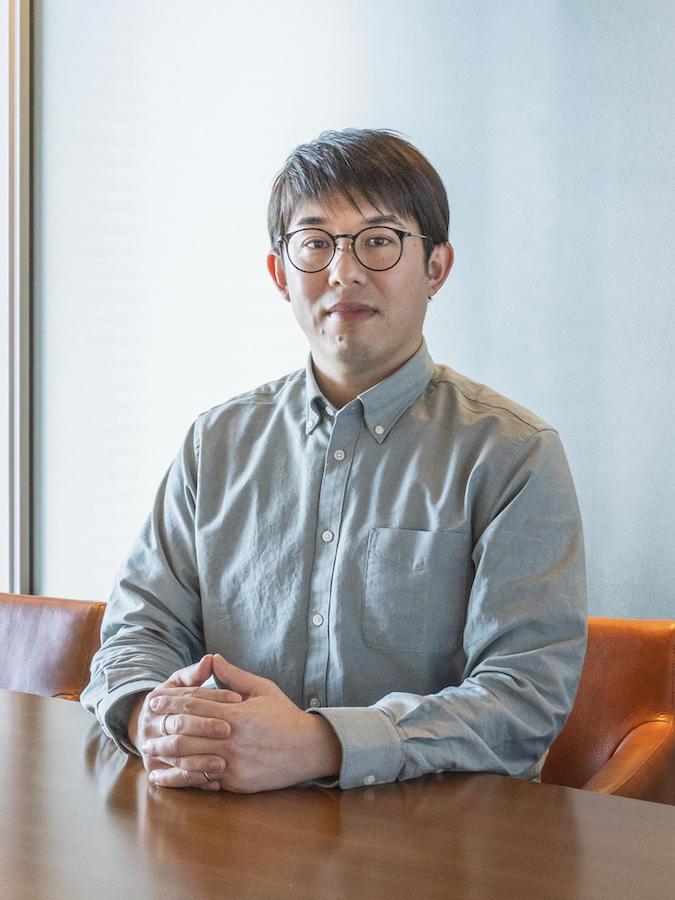
The power of the Mana series’ style
――Visions of Mana is the series’ first new title in over 15 years since Heroes of Mana was released on the Nintendo DS. How do people feel about the new game’s unexpected announcement?
Masaru Oyamada: I get the feeling that they are surprised because they never thought a new entry in the Mana series would be announced. I also get the impression that people are excited about the visuals that we have released so far. On the other hand, we haven’t been able to release all the information yet, so I expect people are waiting to hear more. We are excited because we know what it’s about and want to reveal more as soon as possible.
――Who is developing Visions of Mana?
Oyamada: Square Enix is developing Visions of Mana together with NetEase Games’s Ouka Studios.
――First, I’d like to ask about the background behind Visions of Mana’s creation. When did development start?
Oyamada: The project itself started when we were working on the Trials of Mana remake. When we had completed the alpha version of Trials of Mana and the direction that it was going in had started to become clear, we began to use this as a basis to come up with ideas for the next game in the series. Development of Visions of Mana started to take off when we were polishing up Trials of Mana, when our collaborators and in-house staff started to have more bandwidth. We were making the concept visuals for the new title around the time of the series’ 30th anniversary live broadcast, so I showed them to (Koichi) Ishii and asked him to oversee the design.
――So as you mentioned, Ishii supervised the monster designs for Visions of Mana, but was he also involved when coming up with the concept for this title?
Oyamada: Yes. He gave us input on the aspects he had paid close attention to when creating the Mana series and told us what we needed to be aware of. The entire development team kept his advice in mind when making Visions of Mana.
――I see, so Ishii took on the role of series consultant for Visions of Mana.
Oyamada: For this game, we wanted to create a world that would bring the spirits and creatures from the Mana series to life, so we had decided from the outset that the game field should be expansive. Of course, it has fast travel, but I think it’s also fun to travel the world by walking or riding, and not just warping between places. I wanted the traversal companion to have a “Mana vibe”, so I asked Ishii to design it. Then, one day, I suddenly received a rough sketch of Pikul (laughs).

―― Up until now, you were mainly involved in the Mana series remakes. Did you have any difficulties when making this completely new console title that you didn’t encounter when working on the remakes?
Oyamada: While there were elements of the Mana series that we didn’t want to stray from, it was difficult to determine where we could step in and shake things up.
――I see. Visions of Mana is being touted as a return to the series’ origins. In your opinion, what are the origins of the Mana series and what makes something Mana-like?
Oyamada: I am actually a fan who was charmed by the Mana series. This began when I played the first game when I was in elementary school, leading me to play the subsequent games. Now that I am in a position where I am involved in the series’ development, I think the easiest way to understand the Mana series style is by looking at the parts that Ishii was involved in. When I was trying to break down the key elements of the Mana series, I came to the conclusion that it would be best to include monsters like Rabite, that had been in the Mana games up until now, and to have Ishii supervise their design. I thought this would be a highly convincing way to convey the essence of the Mana series.
I also asked HACCAN, who did the character designs for the Mana remake games, to do the designs for Visions of Mana as well. In Visions of Mana, he skillfully integrated the visual style of the Mana series. Therefore, I was confident that the characters would be fine. Next, I thought about what a Mana-like environment would be like, and decided upon Hiroo Isono’s Mana Tree. It was these three key components of the Mana series that we used for Visions of Mana.

――In Japan, there have been four numbered titles released in the Seiken Densetsu (Mana) series up until now. With Visions of Mana being the first completely new title after such a long time, does it start with a “V” because you had the Seiken Densetsu V numbering in mind?
Oyamada: Everyone seems to think so (laughs). However, as overseas releases didn’t use a numbering system, we simply came up with an “___ of Mana” style title for this game, as it will be launching globally. When the story and character design were completed to some extent, the localization staff and I looked for a word that could be used to describe the game, and we decided upon ‘vision,’ as it has multiple meanings that fit the game’s story. Naturally, we have been developing Visions of Mana in the hope that it will become a mainline title of the series.
―― Some titles in the Mana series are connected to each other in terms of timeline or setting. Is Visions of Mana set in a separate world? Or is it connected to any of the previous games?
Oyamada: Although the story of Visions of Mana is set in a different world, it is sprinkled with elements that will make people who know the series smile and feel a connection to previous games.
A satisfying experience that anyone can play
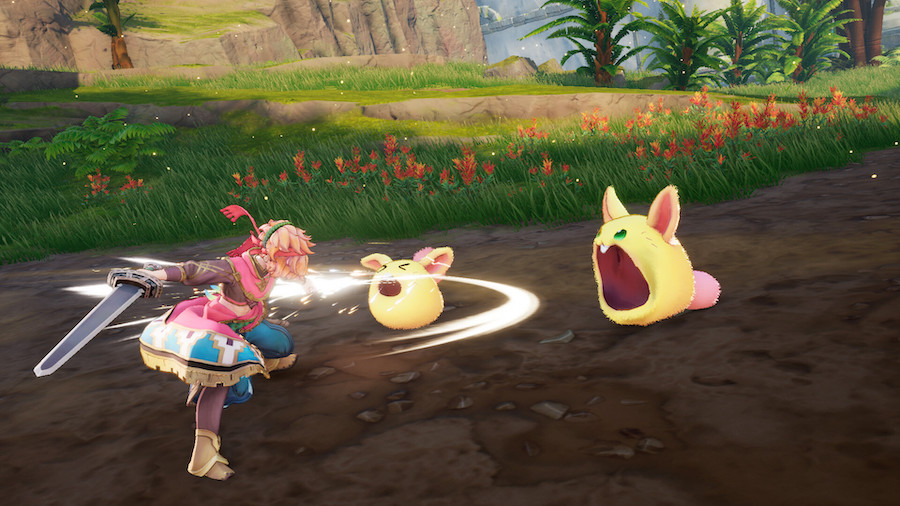
――Let’s delve into the game’s contents. Nowadays, there is a huge variety of action games, with many sub-genres such as Soulslike and musou-style games. In light of this, I would like to know about Visions of Mana’s design direction as an action game.
Oyamada: The Mana series started off with the design of an action RPG that can be seamlessly played in a command RPG style. So, for Visions of Mana as well, we built the title as an action game with RPG foundations. Rather than being directly influenced by a particular title, we wanted the game to keep up with modern controls that have been refined over the years. In my opinion, brutal and flashy action is not something I would consider Mana-like. We believe that Visions of Mana is a game that anyone can pick up and play while also getting a satisfying introduction to the series and what it entails.
――Were you conscious of broadening the title’s appeal in the sense that a difficulty level similar to other games in the series might put players off? Did sticking to a gentle game design overall conflict with its identity as an action game?
Oyamada: Not as such. While some games aim to be challenging, there are few titles nowadays that are designed to be accessible to various players, so we decided to make Visions of Mana so that it was accessible to all types of players, including newcomers to the series and genre. There were people who said: “Why don’t you make it more stylish?” or, “Why don’t you have big flashy moves?” but if you ask me, I personally don’t think that’s what the Mana series is about.
――I understand. So, the concept of “Mana-like,” which formed the foundation for this title, also served as a good guideline for the game design?
Oyamada: That’s right. Of course, my perspective as a fan of the Mana series became a benchmark for the game. As this is the series’ first new title in a long time, I wanted to make a game that would be a faithful addition to the series and encompasses everything that makes a Mana game unique
――Looking at previous interviews, I sometimes get the impression that you are a Mana series superfan. Your answer just now reminded me of that.

Oyamada laughs.
―― The game has been described as ‘semi-open field’, but how big is the field overall? The area I got to experience during the hands-on session seemed very large.
Oyamada: In the hands-on play for members of the press, you were able to experience two areas: Fallow Steppe and Mt. Gala. Fallow Steppe is representative of the game’s larger field areas, and there are also smaller dungeon-sized locations like Mt. Gala Players can expect a combination of these different-sized locations as they explore and discover the world.
――I feel like the phrase “Semi–open field” may still have some people confused. Could you explain it?
Oyamada: It was difficult to find the proper word for it. First of all, please be aware that this game is not open world. However, it does contain several expansive areas like Fallow Steppe where you can explore the vast world and its breath-taking landscapes almost seamlessly. So, although it’s a bit peculiar, we use the expression “semi-open field.”
――Music is an important aspect of the Mana series. This time, you have implemented interactive music that seamlessly changes between the field and battle encounters. Were there any difficulties with this?
Oyamada: Up until this game, the music when you are moving across the field has been the same as the battle theme. However, we decided to introduce interactive music into Visions of Mana because the game field is so vast that it would be difficult to feel any tension without it. Even if the same song plays in the field, it goes into a different arrangement when you encounter an enemy. The tried-and-tested aspect of this sound design is that it gives players a sense of variety and immersion even if they have been playing the game for a long time.
What enabled the Mana series to be reborn?
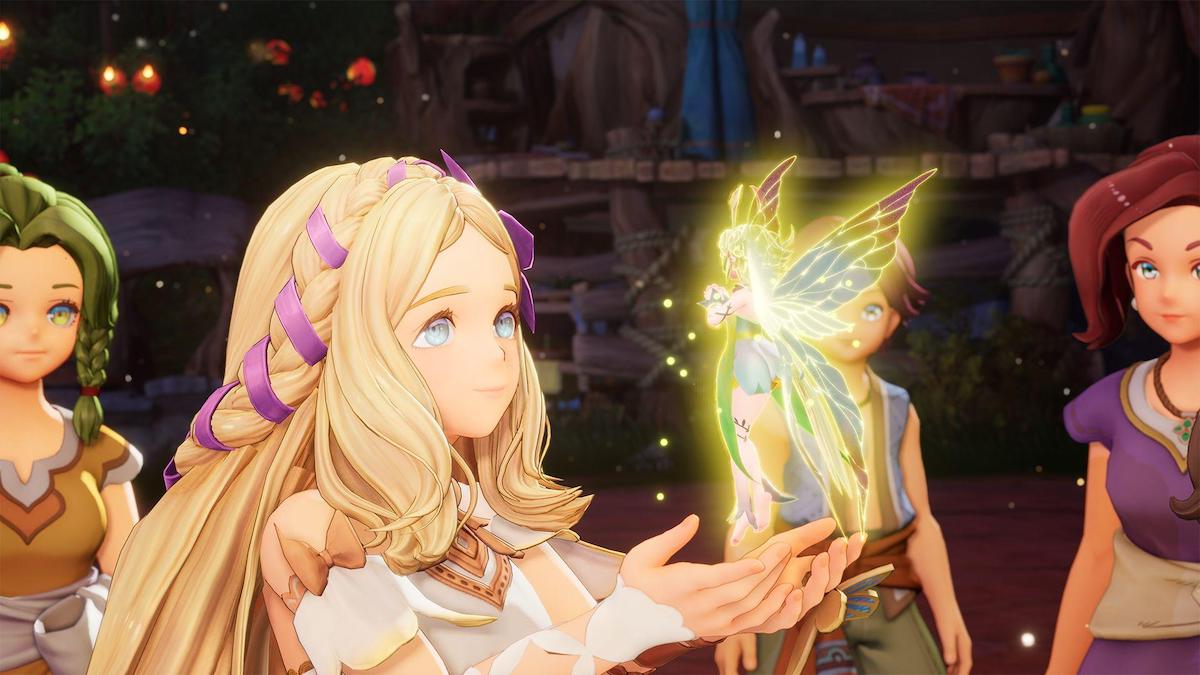
――Changing the topic a little, I feel like the Mana series has in recent years become a mobile platform-focused series with console remakes and remasters, with few prospects for a new console game. Could you tell us about what allowed you to make a new game for the series now?
Oyamada: We established our track record with Secret of Mana (Seiken Densetsu 2 in Japan), Collection of Mana, Trials of Mana (Seiken Densetsu 3) and the remastered version of Legend of Mana. The performance and positive reception from the fans, who showed a strong appreciation for what we were trying to create even though the original developers including Ishii and (Hiromichi) Tanaka had already left the company, enabled us to secure the greenlight for a new game in the Mana series.
Around the time I took over, the platforms on which you could play Mana series games were becoming obsolete, so I started out by making it possible for people to still play the titles that are considered masterpieces on the console generation at the time. These remakes and remasters helped determine the direction of a new Mana series. We released Trials of Mana in 2020 (a 3D remake of the 1995 game, which was released on PS4, Switch, PC, and later Android and iOS), which was very well received by players. It was this positive reception that helped establish the direction in which we wanted to take the series and was one of the main factors that led to the development of Visions of Mana.
――I’m sure it took a lot of energy to get the game greenlit, such as persuading others and planning. Although you spoke about the accumulation of various small factors, I would like to know why you tried so hard.
Oyamada: I think it was simply because I kept stubbornly proposing plans to the company (laughs).
――It seems that the development team, including you, took on challenges without breaking.
Oyamada: Naturally, the decision makers in the company understand the game market, and were able to address some issues based on their previous experiences. However, it is ultimately the producer’s job to bring the project to fruition. I think Visions of Mana came about because I kept submitting proposals and resolving any points of concern that popped up.
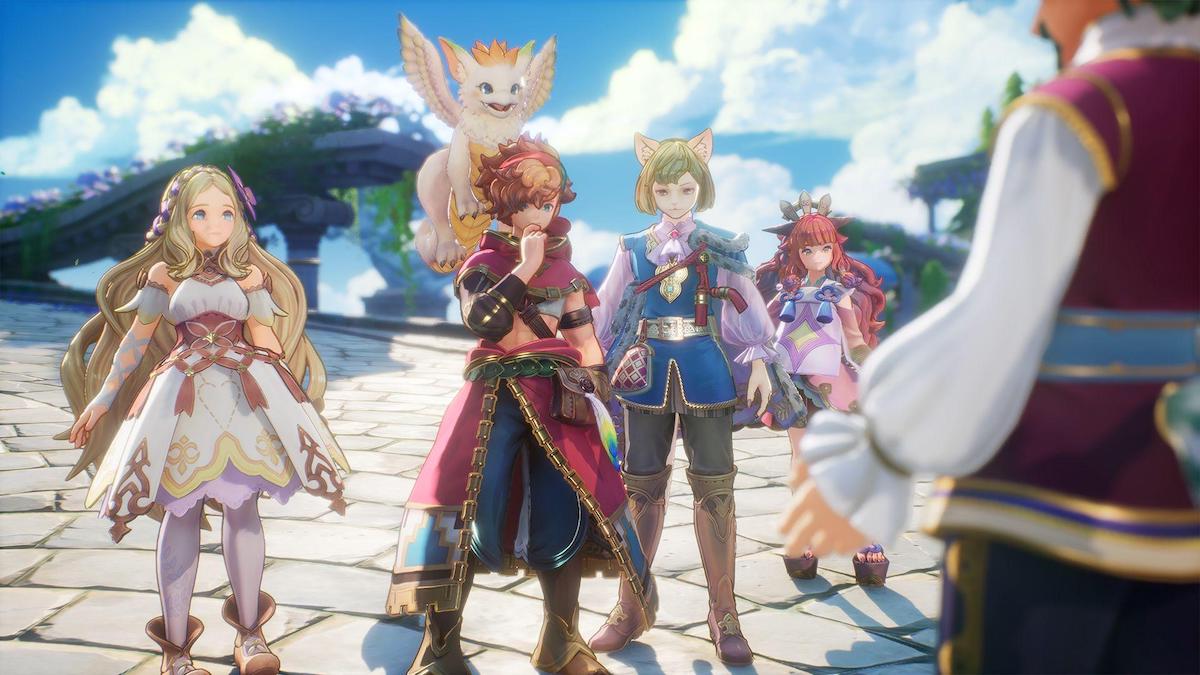
――Thank you. There was an announcement that the Trials of Mana remake shipments and downloads reached 1 million, so it seems like it did well. How was the game received?
Oyamada: From the feedback, it seems that the people who played the original Trials of Mana got the same feeling when they played the remake. We were worried about the elements that we had modernized, so we were relieved when people welcomed them. In addition, we also received responses from people who were playing Trials of Mana for the first time with the remake, saying that it was an interesting game, even though some of the systems felt a bit outdated. So, I think we were able to get the right balance of both old and new with the remake.
In terms of global reception, there were definitely a lot of players in Japan, but people in various countries across North America, Europe and Asia also played the game. Perhaps because the original SNES version of Trials of Mana was never released abroad, it had attained a kind of legendary status, so I think people were pleased when the remake came out.
――Did Trials of Mana expand the series’ global market potential?
Oyamada: Even though we did not release (the original) Trials of Mana overseas, I am very grateful that people understood the series and were willing to buy the game.
Treasuring the Mana series’ unique identity
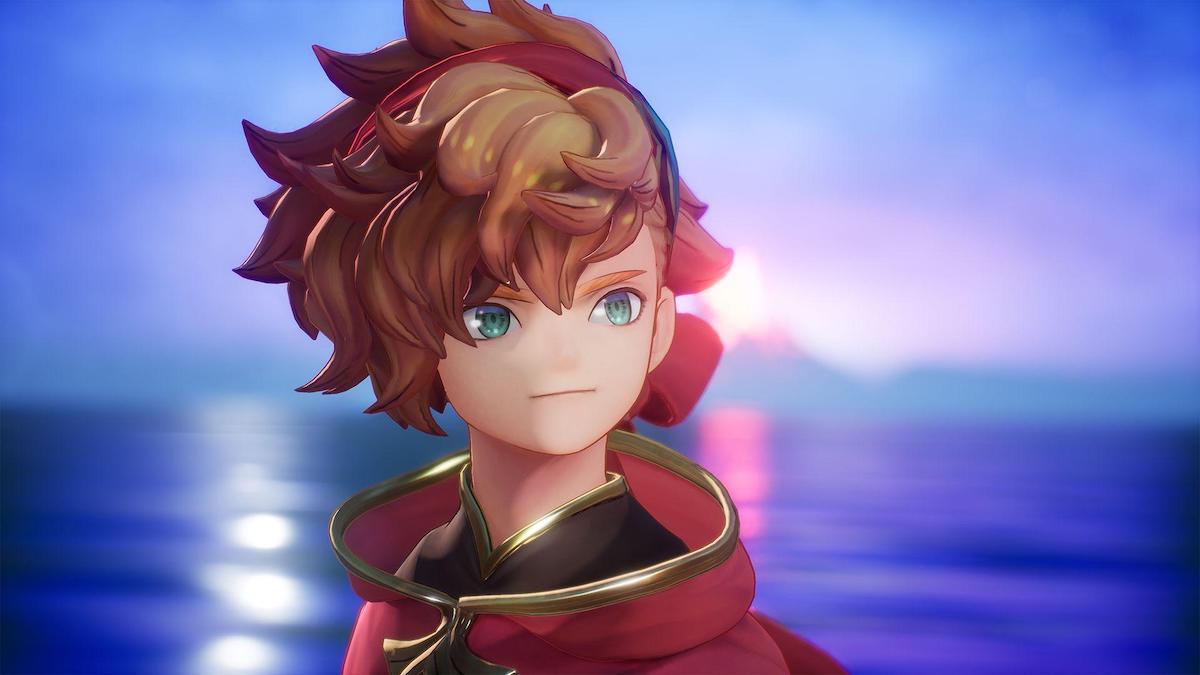
――You mentioned players in other countries, but did you sense any difference in the reactions to Visions of Mana’s announcement in Japan and overseas?
Oyamada: In Japan, there are many people who have been playing the series for a long time and are familiar with the IP’s history, so the reaction has been half expectant and half anxious. On the contrary, overseas players showed a lot of curiosity about the game and what it entails, including if it would be available on the platforms that they own. The difference between the reactions is somewhat interesting.
――People’s reactions were “It seems like an interesting-looking action game will be released by Square Enix.”
Oyamada: Yes. At the event (The Game Awards 2023) where we announced Visions of Mana, I felt like overseas studios were announcing titles one after another, and then suddenly there’s this Japanese game with a completely different style and atmosphere.
―― Do you have any plans as to how you’d like the Mana series to reach out to Western gamers in the future?
Oyamada: I get the feeling that many people who picked up Secret of Mana (1993, Seiken Densetsu 2) at the time it came out were young like I was because I regularly receive feedback from people who play the latest entries through the lens of their childhood experiences with the series. I hope that as they grow older and become parents, they will recommend the Mana series to their children and tell them about how fun it is.
The unique atmosphere and design might make some people feel that it is a bit ‘childish’, however these are the strengths of the Mana series. Rather than changing these features that make the Mana series, I hope that new players will come to like these games that have been popular in Japan for a long time for what they are.
――So, while keeping globalization in mind, you’re taking care not to let your series’ identity become westernized.
Oyamada: I think the visuals of the Mana games are a distinctive characteristic, therefore it is best to deliver the game based on the developers’ creative vision. For example, there are many different types of characters in the Mana series. I think the fun of the game is encountering this mysterious world and its inhabitants and because of that, we don’t have a strong focus on a particular audience. However, we do work on the game while bearing in mind that the Mana series is loved by fans from all over the world.
――As a fan of the Mana series, I hope it continues. Sorry to ask this when the release of Visions of Mana is just around the corner, but would you like to continue working on the series?
Oyamada: I would like to keep striving to make Mana series’ games until the day the company and the players say they don’t need me anymore (laughs).
――We are looking forward to playing more Mana games. Thank you very much for your time.
Visions of Mana is due to be released on PS4/PS5, Xbox Series X|S and PC (Windows/Steam) this summer.
[Interviewer, Writer, Editor: Yuuki Inoue]
[Interviewer, Editor: Ayuo Kawase]
[Translator: Verity Townsend]
[Translation Editor: Amber V]
The original Japanese interview can be found via Automaton Japan.
© SQUARE ENIX

